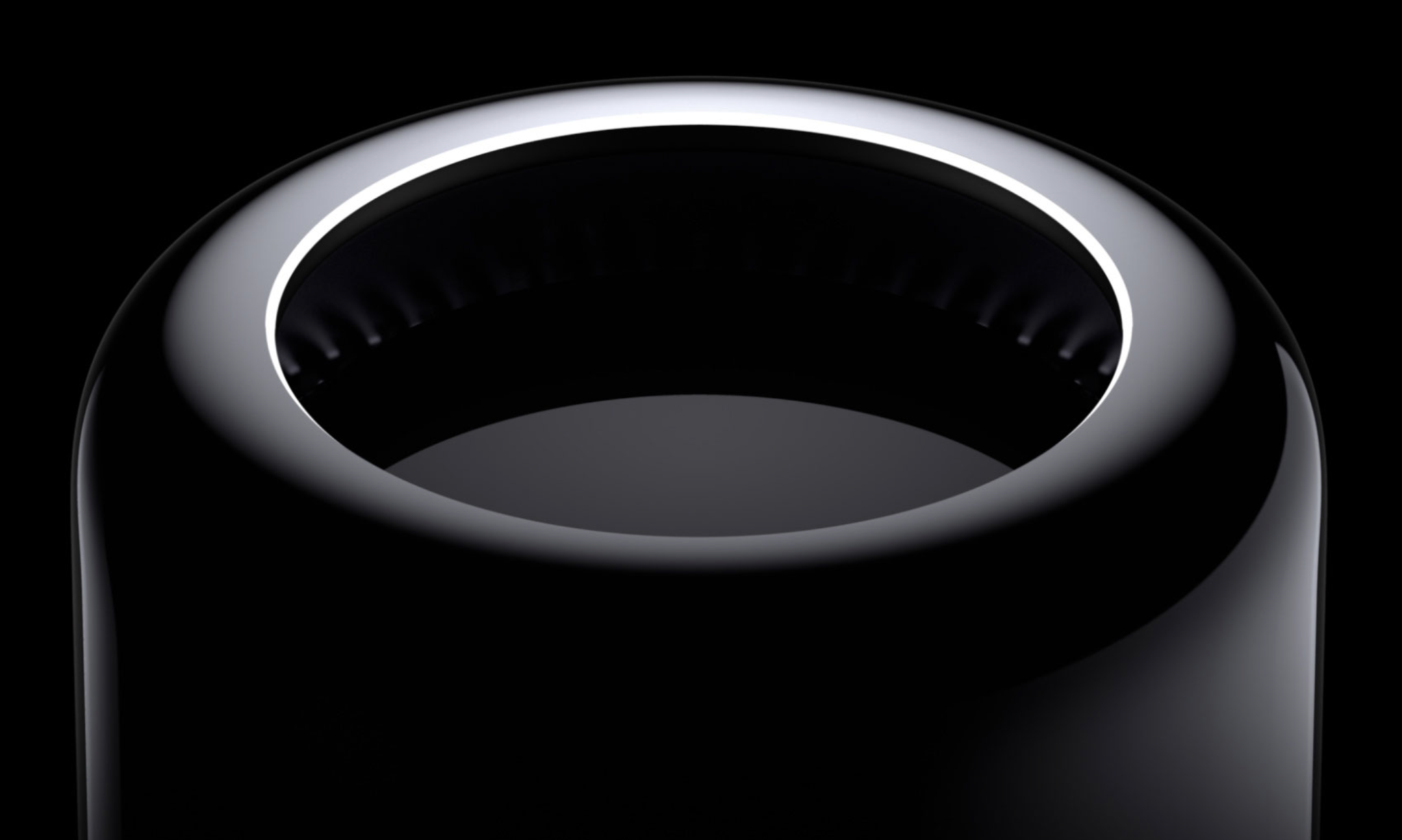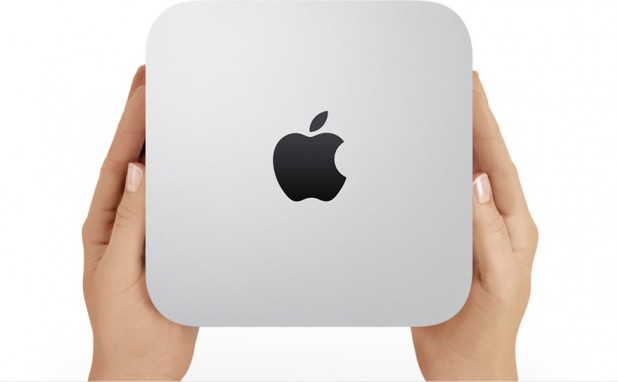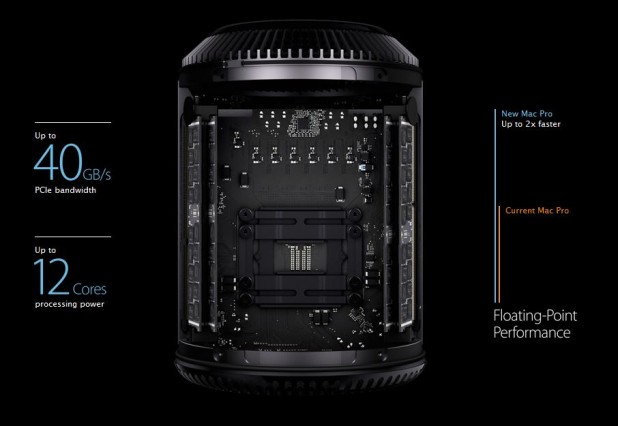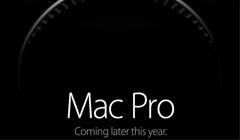[caption id="attachment_140856" align="aligncenter" width="2728"]

Mac Pro[/caption] “We’re sorry for that,” said Apple’s Phil Schiller, referring to his company's negligence of the Mac Pro:
1,202 days (and counting) without so much as a spec bump. Now a completely new Mac Pro is coming... someday. Before the new Mac Pro arrives, Apple will update the iMac sometime this year. That's in addition to the Mini (still around, although not loved) and some new Apple-branded monitors due to roll out at some point. It's a big Apple push for a hardware refresh, in other words. But let’s take a step back: why have we gone 1,200+ days without a spec bump for the Mac Pro? In an interview with several reporters, Apple’s Craig Federighi
admitted that the Mac Pro's ‘trashcan’ form-factor limited what Apple could do. “I think it’s fair to say, part of why we’re talking today, is that the Mac Pro – the current vintage that we introduced – we wanted to do something bold and different,” Federighi said. “In retrospect, it didn’t well suit some of the people we were trying to reach. It’s good for some; it’s an amazingly quiet machine, it’s a beautiful machine, but it does not address the full range of customers we want to reach with Mac Pro.” He added:
I think we designed ourselves into a bit of a thermal corner, if you will. We designed a system that we thought with the kind of GPUs that at the time we thought we needed, and that we thought we could well serve with a two GPU architecture… that that was the thermal limit we needed, or the thermal capacity we needed. But workloads didn’t materialize to fit that as broadly as we hoped. Being able to put larger single GPUs required a different system architecture and more thermal capacity than that system was designed to accommodate. And so it became fairly difficult to adjust. At the same time, so many of our customers were moving to iMac that we saw a path to address many, many more of those that were finding themselves limited by Mac Pro through a next generation iMac.. And really put a lot of our energy behind that. [But,] while that [upgraded iMac] system is going to be fantastic for a huge number of customers — we want to do more.
We’d be remiss not to surface recent news that Apple is turning away a GPU partner,
apparently to build its own hardware. The timeline for a refreshed Mac Pro and Apple’s new GPU also seem to align, so we have to wonder if Apple is designing this new desktop powerhouse for use with its own processor(s). [caption id="attachment_116218" align="aligncenter" width="618"]

Mac Mini[/caption]
Mac Pro, iMac, Mini and Professionals
The iMac will get a spec bump later this year, likely in autumn (though Apple didn’t say as much, that’s the typical refresh timeframe for iMac). The Mini has a fuzzier fate. “The Mac Mini is an important product in our lineup and we weren’t bringing it up because it’s more of a mix of consumer with some pro use,” Schiller said. “The Mac Mini remains a product in our lineup, but nothing more to say about it today.” In the reporter roundtable, Schiller and Federighi did say the Mac Pro represented a single-digit sales percentage within the Mac lineup; MacBooks Pro apparently outsell desktop Macs 4:1. Only 30 percent of the overall Mac user base is considered “pro” by Apple, and these professionals can encompass video creation, music editing, graphic design, and other genres. But tech pros are key to Apple's image and future. Federighi said: “I think if you use Xcode downloads as a metric, it’s possible software developers are actually our largest pro audience. It’s growing very quickly, it’s been fantastic.” Schiller added: “I just want to reiterate our strong commitment there, as well. Both with Final Cut Pro X and Logic Pro X, there are teams on those software products that are completely dedicated to delivering great pro software to our customers. No foot off the gas there.” Virtual Reality (VR),
dismissed by Apple in favor of AR for its own use-cases, casts a deep shadow. As Federighi notes, the current Mac Pro was ill-equipped to deal with the heavy lifting VR demands. It doesn’t mean anything VR-related is in the offing for WWDC; only that Apple is listening to tech pros who are discontent with the company’s desktop efforts. [caption id="attachment_116454" align="aligncenter" width="618"]

Mac Pro[/caption]
What’s It All Mean?
The main takeaway is that Apple misjudged the ‘pro’ market. The subtext: it still cares about pro users. In addition to fixing the GPU issues, the new Mac Pro will also be upgradeable. The ‘trashcan’ design was pretty, but Apple’s hardware initiatives move slower than the pros who use them. That it hasn’t updated the Pro in four years is the problem; that pros can’t massage the machine to suit their morphing long-term needs is the lasting impact. Why Apple waited
four years to admit it was wrong is beyond us. Federighi said: “We certainly see, as I know you do,
a wide spectrum of views expressed in Internet forums about all things, including our products. I think it’s not entirely unreasonable and it’s understandable that some people who love their Macs so much and see something new that Apple is talking about in the form of iPad, creating in some of them a sense of insecurity: ‘What does this mean? There’s thing I really care about, I don’t want to see it go away, I see this other new thing on the scene, what does this mean to me, what does this mean to the product I love?’” Apple sat on its hands while pros
openly questioned what it was doing. This line of questioning has been making its way through the blogosphere for at least two years. Federighi and Schiller joked about the “emotional journey” the company took in admitting defeat, but it’s probably not funny to professionals who make a living via a Mac. The incoming Mac Pro upgrade is not exactly world-beating, and a consequential concession of Apple’s failings. The $2,999 base model now has a 6-core Intel Xeon Processor, two AMD FirePro D500 GPUs and 16GB RAM. Another $1,000 kicks you up to an 8-core Intel Xeon processor and dual AMD FirePro D700 GPUs. The squat, cylindrical tower was artistic, both visually and on an engineering level. Allowing users to repair or replace parts almost guarantees some design concessions. New displays are coming, which will leave some LG Ultrapixel users irate, since Apple intimated in the past that it was dropping out of the monitor game. All of this signals a lack of cohesion within Apple’s Mac ranks. Macs Pro are coming
someday (next year at the earliest), along with at least one new Apple-branded monitor (likely 5K). The iMac will see an update later this year, and the Mini is… still around, and “important,” but that’s about it. Questions hang in the air. When asked about the possibility of a touch-screen iMac or display, Schiller said “[of the] things [pro customers are] most interested in, this doesn't even register,” though Microsoft's Surface is receiving high praise from the tech press and some power users. Is the Touch Bar coming to a standalone keyboard, or is it a one-off from Apple, relegated to 2016 MacBooks Pro? It’s been four years; why do we have to wait one more for a new Mac Pro? Is the Mini
really important, or is that lip service? Not only did Apple misread the pro
hardware market, it was wrong about professionals. Hardware matters to makers. While it’s nice to see a light at the end of the Mac tunnel, there’s no reason to ignore pros questioning their loyalty to Apple. That we’re only hearing about new hardware
now suggests that pros have indicated a willingness to potentially move on. The outcome: Apple is basically making a PC. Federighi admitting the current Mac Pro design limited what Apple could offer is a couched explanation of why the iMac was being updated routinely while the Pro and Mini sat idle. It’s really an admission of guilt. Apple saw people move on from the Pro, grab an iMac as they openly complained online, and offered no new options for them. The next Mac Pro will likely be special and right many wrongs. But after
four years, pros will need a commitment from Apple that the company supports them. In these instances, we like to say that time will tell, but Apple should hope that’s not how most pros feel. The past four years have told a tale most would like to forget.
 Mac Pro[/caption] “We’re sorry for that,” said Apple’s Phil Schiller, referring to his company's negligence of the Mac Pro: 1,202 days (and counting) without so much as a spec bump. Now a completely new Mac Pro is coming... someday. Before the new Mac Pro arrives, Apple will update the iMac sometime this year. That's in addition to the Mini (still around, although not loved) and some new Apple-branded monitors due to roll out at some point. It's a big Apple push for a hardware refresh, in other words. But let’s take a step back: why have we gone 1,200+ days without a spec bump for the Mac Pro? In an interview with several reporters, Apple’s Craig Federighi admitted that the Mac Pro's ‘trashcan’ form-factor limited what Apple could do. “I think it’s fair to say, part of why we’re talking today, is that the Mac Pro – the current vintage that we introduced – we wanted to do something bold and different,” Federighi said. “In retrospect, it didn’t well suit some of the people we were trying to reach. It’s good for some; it’s an amazingly quiet machine, it’s a beautiful machine, but it does not address the full range of customers we want to reach with Mac Pro.” He added:
Mac Pro[/caption] “We’re sorry for that,” said Apple’s Phil Schiller, referring to his company's negligence of the Mac Pro: 1,202 days (and counting) without so much as a spec bump. Now a completely new Mac Pro is coming... someday. Before the new Mac Pro arrives, Apple will update the iMac sometime this year. That's in addition to the Mini (still around, although not loved) and some new Apple-branded monitors due to roll out at some point. It's a big Apple push for a hardware refresh, in other words. But let’s take a step back: why have we gone 1,200+ days without a spec bump for the Mac Pro? In an interview with several reporters, Apple’s Craig Federighi admitted that the Mac Pro's ‘trashcan’ form-factor limited what Apple could do. “I think it’s fair to say, part of why we’re talking today, is that the Mac Pro – the current vintage that we introduced – we wanted to do something bold and different,” Federighi said. “In retrospect, it didn’t well suit some of the people we were trying to reach. It’s good for some; it’s an amazingly quiet machine, it’s a beautiful machine, but it does not address the full range of customers we want to reach with Mac Pro.” He added:
 Mac Mini[/caption]
Mac Mini[/caption]
 Mac Pro[/caption]
Mac Pro[/caption]


